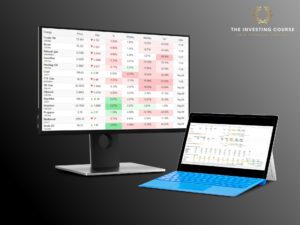How should I measure and control risk? What is the right level of risk?
Risk means the likelihood of permanently lower profits

Is the level of risk associated with the investment suitable for your preferences?
Control your downside
Do you have an overview of the company’s financing and debts? Can they run out of liquid assets (cash) at a particularly inconvenient time?
Have you conducted a pre-mortem analysis? If in the future something were to go horribly wrong, what would be the most probable cause? Can you become a forced seller, i.e. forced to sell the position due to lack of liquidity? Fraud? Natural catastrophe?
What would you advise a friend to do? How would and should a Bonus Pater Familia act?
Do you have a predetermined stop loss level for both the share price and company fundamentals?
What is your strategy regarding selling your shares in the future?
What’s your overall scenario for the future in which you will probably sell your shares? What policy rates, market rates, and actual valuation multiples, based on old ranges, are likely in the coming years. Imagine a plausible trajectory for the state of the stock market and investor preferences.
Are you at risk of groupthink? Your most important task from a macro perspective is to counteract the tendency to pay excessively high valuation multiples, along with other irrational investors, following an unprecedented upswing.
Do you feel FOMO? Consider that waiting just two short years (starting in 2000 or 2007) would have spared you a decade of regret and worry. Waiting for two years in a bull market that persists only means potentially missing out on a position and thus needing to look for new ideas. But waiting two years from an extreme macro position can save you from significant and permanent losses.
Do you understand your own analysis? Start with simple, intuitive, straight forward analyses. Don’t try to do everything right away. Start by analyzing the revenue. Then the profits. Then costs, followed by investments. Then break down each variable into sub-components, e.g. revenues into volume (number of units) and unit price.
Sell me this pen!
How will the product get in front of the eyes or under the nose of the customer? What will it cost to put it there, including manufacturing, marketing and distribution. What is the value proposition that entices customers to buy the product instead of holding onto their money (or spending it on an alternative product). What will create the urgent desire that leads to a purchase? “Sell me this pen” (from The Wolf of Wall Street movie)
How should the product be produced and distributed (and perhaps maintained in the aftermarket) at a reasonable cost, ensuring that customers find it worthwhile to purchase?
What are the competitors doing in the meantime? Can the company reasonably maintain a competitive edge (how, why?) to be slightly better than the competitors?. The product must not only be good enough and cheap enough for the customer. It must reasonably be perceived to be superior to the competitors’ in some area of the Product itself, such as Place (distribution), Price (including search process, retrieval, maintenance) and Promotions that creates a sense of urgency and fear of missing out (FOMO).
Do you have a sound portfolio strategy and risk management policy?
Do you follow your own strategy and investment rules?
* * *
In Summary:
The most important thing in terms of assessing the riskiness of an investment is how certain you are that your key assumptions are knowable and likely to be correct. For this reason it’s a good idea to always ask yourself the following:
- What key assumptions am I making? (e.g regarding future growth or valuation multiples for the stock)
- How certain am I that I am correct? (assign a probability – e.g “25%” or “70%”)
- What must go right in order for me to make money, or at least not lose money? The fewer things, the better.
You May Also Want To Read:








